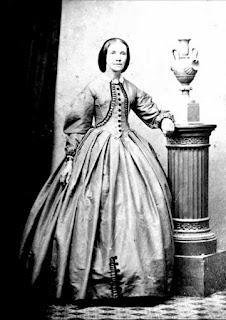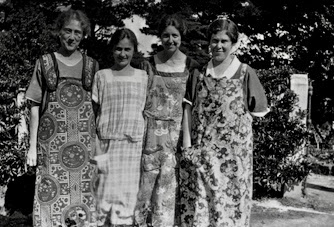35/52 Free Space: Maria Nightingale.
35/52: Free Space: Maria Nightingale.
When I was a teenager, in the 1960s, if an unmarried girl got pregnant she had a very bad time. My mother had a friend who had two nieces in Melbourne who experienced this. They came to spend their pregnancies in Adelaide at the Kate Cox Home and my mother used to bring them out to our place at weekends and support them in other ways. I was told that this was top secret. They had told their friends in Melbourne that they had gone to work in Adelaide and no one was allowed to know the truth. Never Ever! I often wonder if they have since told their husbands and children or even connected with the babies who were of course given away for adoption immediately. I also had a friend who this happened to. She hardly got to see her son, let alone hold him. It was all dreadful. I myself got pregnant when I was 19 and had an abortion which was an experience of gut wrenching grief but I couldn’t have gone through with the adoption procedure.
We also read about unmarried pregnancies in Charles Dickens. Who is that girl in David Copperfield who ends up being sent to Australia? Her name was ruined. She could’t expect to lead a normal life from that point on. Although perhaps she managed it in Australia, where no one knew her sordid past.
So imagine my surprise to find a 2x great aunt living with her illegitimate daughter and making a living as a dressmaker. This is the story of Maria Nightingale.
She was born in Bridlington in 1804 to William Nightingale and Mary née Bellard, the sixth child out of eight. three sons and 5 daughters. As far as I can tell!! There are a lot of different family trees that include this family and they differ. There are not many sources. Mary Bellard married William Nightingale in 1794 in Bridlington, although I haven’t found documentation of it.
At that time Bridlington was a port and a fishing town. The harbour had been destroyed in a storm in 1772 but was rebuilt by 1807. Ships traded corn with Flanders and France and later a mill would be built there to process the corn. Ship building began in Bridlington in 1789 and the first bank was established in 1802. John Wesley preached here in 1779. The town was 45 km north of Kingston-on-Hull. In 1811 the population was 3,741, about the size of Smithton Tasmanian today. So it was a small town and people would have known each other. Later Bridlington became a holiday destination but not so much today when English people prefer to go to Spain, or somewhere hot. Still, there are over 100 hotels there but it is now ten times bigger. There were two parts of Bridlington, the ‘Old town’ and Bridlington Quay which was the docks.
William Nightingale, Maria’s father, was already dead by the first English census in 1841 so I do not know what his occupation was.
In 1819, when Maria was 14 and her sister, Frances, 15, their mother died. Three years later their father died as well. They had two older brothers, maybe two older sisters, and two younger siblings, the youngest one only 10 when they were left orphans. I don’t know how they supported themselves. In 1841 Maria’s older brother, John, is listed on the census as a labourer, but he was already married by the time his father died. Possibly this John and the other unmarried older brother, Robert, were both labourers and they supported their younger siblings. I can find out nothing at all about the other sisters: Ann and Elizabeth and I begin to doubt their existence. I do know that Maria supported herself throughout her life as a dress maker. So perhaps, from the age of 14, she was threading a needle and doing fine stitching for paying customers.
The next ten years brought change to the Nightingales when three of the siblings got married. First Frances married a mariner, John Jackson, in 1825 and moved to live at Bridlington Quay. In 1831 Robert and Dorothea, a younger sister, both married.
Maria however did not marry and that is significant because she gave birth to a baby girl in 1831. In a small community like Bridlington, this must surely have been heart wrenching. Imagine the scandal at the Wesleyan Methodist Church! I guess she gave it up to Jesus who washed her sins away. Can you imagine her striding along the wind swept Bridlington beach, sobbing perhaps, looking over the grey seas, praying for a miracle, desperately regretting, or plotting revenge on the man who was responsible? Perhaps this was a love affair and she was abandoned. Or perhaps she was ‘taken advantage of’ (aka raped.) She didn’t have an abortion. She didn’t give the baby up for adoption. She didn’t have a mother who could adopt the child and pretend it was her baby. Maria gave birth to the child and supported her until adulthood. Lucky for them both, she had a big sister, Frances, who must have loved her.
The baby was named Mary after her grandmother, Mary Bellard. She seems to have been born in Bridlington but perhaps they moved soon after to live in Kingston-on-Hull where they were not known and she could pass as a widow. Maria was 27.
The first census in 1841 has them all living together in Hull, John Jackson working as a shipwright in a big ship building city. Also in the house were Frances and John’s teenage sons and 5 year old daughter, my great grandmother. Mary Nightingale was 9 years old and Maria was contributing to the household by dressmaking.
In 1848 - 49 Hull experienced an epidemic of cholera. Having lived through the COVID daily briefings, we can begin to imagine the horror of the mounting death toll. Frances and John were later commended for their courage and kindness during the cholera epidemic, supporting the sick, the dying and their families. Did Maria play a role?
In 1851 Mary, who would have been 19, is no longer living with her mother who still with Frances and John. Now Frances and John had another daughter, Mary Jackson.
By 1871, in her sixties, Maria was described as a nurse. This makes me wonder again what role she played in the 1849 cholera epidemic, helping her sister and brother-in-law support the sick. Was that experience something she looked back on in her later years, inspiring her to give up dress making and take on nursing, paying back to society for her sin?
Maria died in January 1876, aged 71. Her sister and brother-in-law outlived her. by ten years.
As for Mary, her daughter, it is difficult to follow her. There is a Mary E Nightingale, aged 19, boarding at school in Bridlington Quay in 1851. But is it likely she would she have been able to be a scholar at that advanced age, the illegitimate daughter of a dress maker? There is a Mary Nightingale who married a Robert Wilson, but the 1891 census says that Mary was born in Ireland. Perhaps she covered up her illegitimacy? My first cousin, three times removed, has disappeared into a historical fog. Forlornly, I hope she lived a happy life.







Comments
Post a Comment